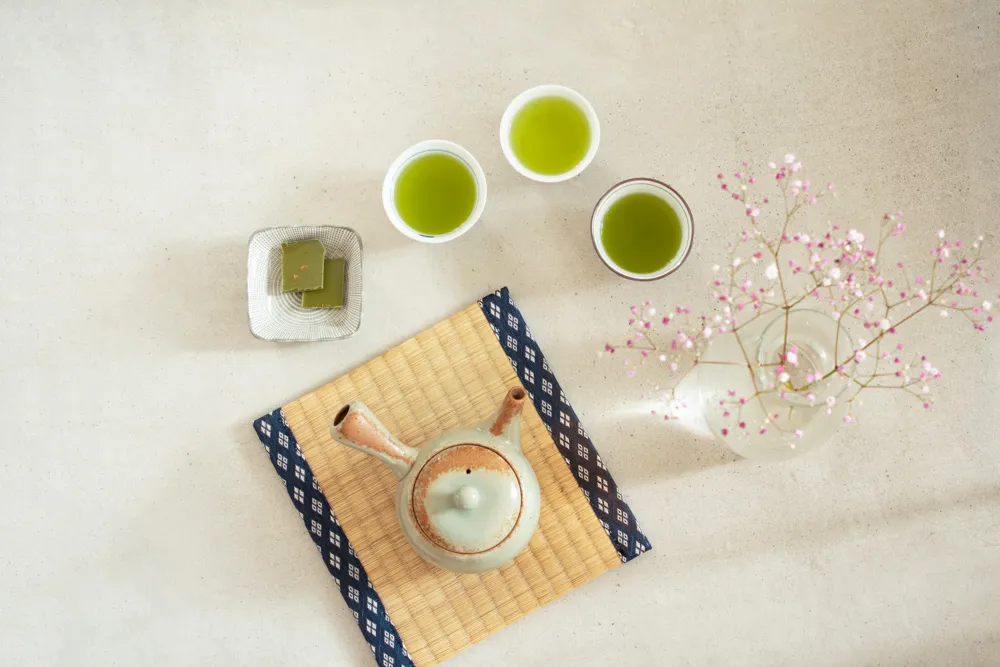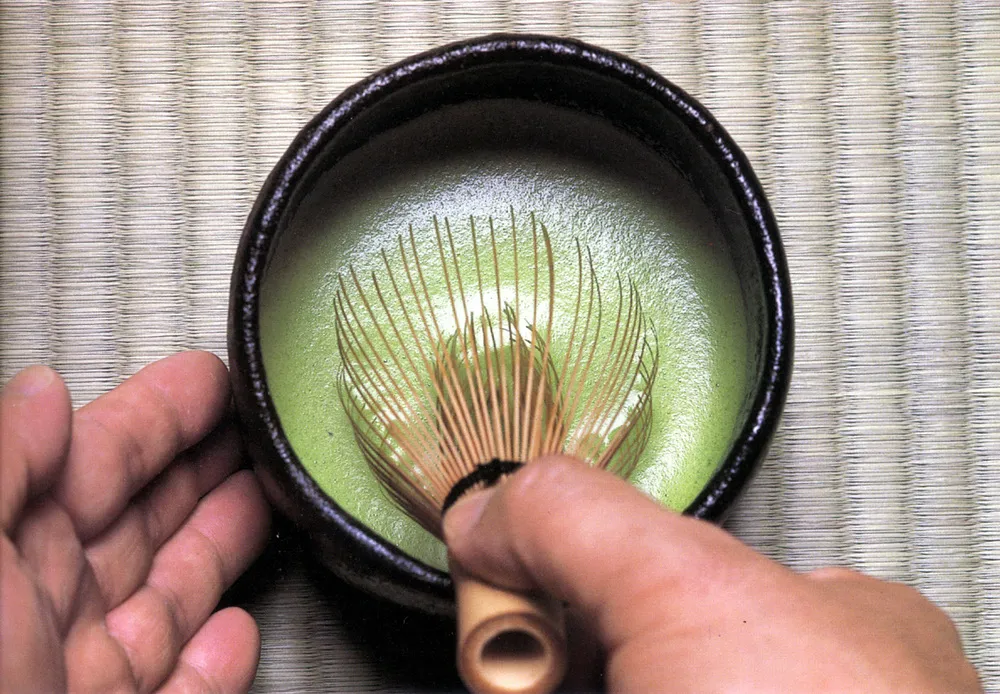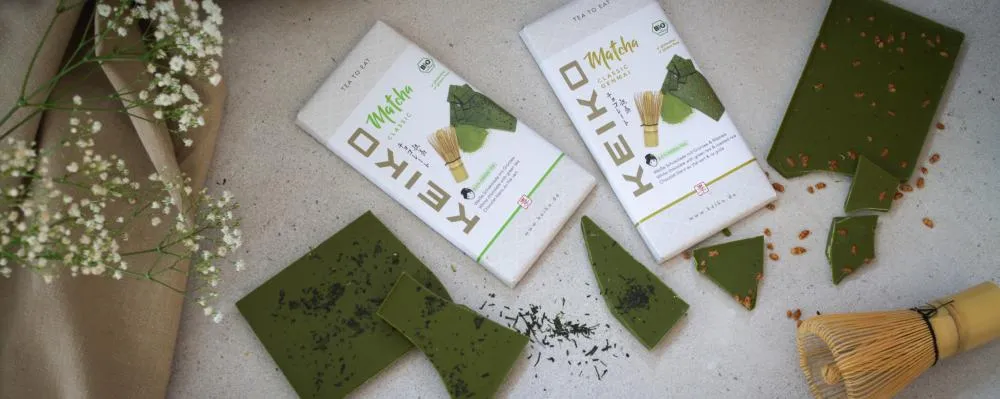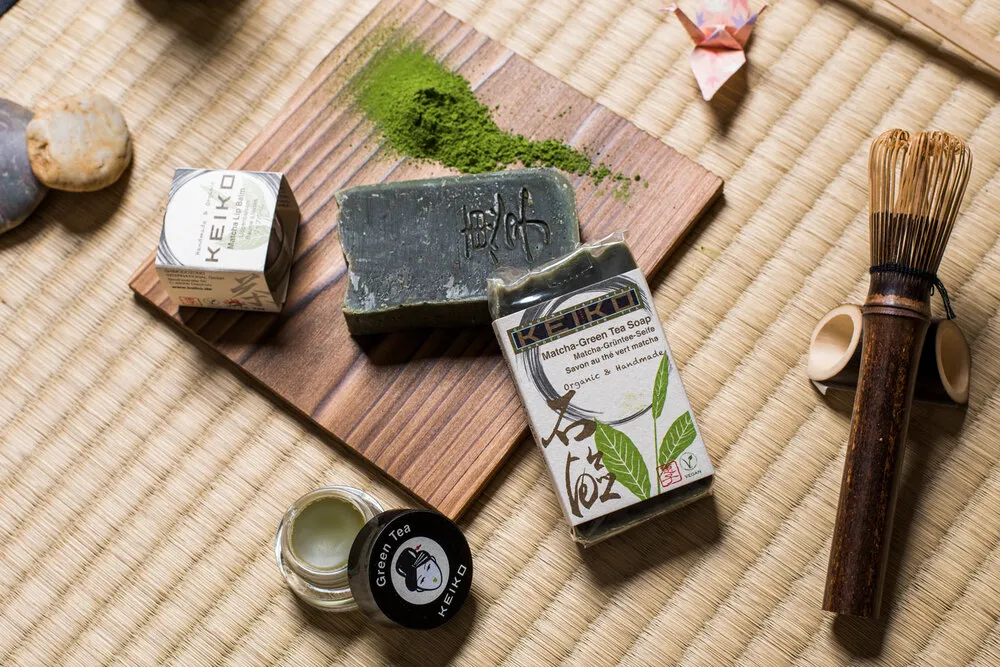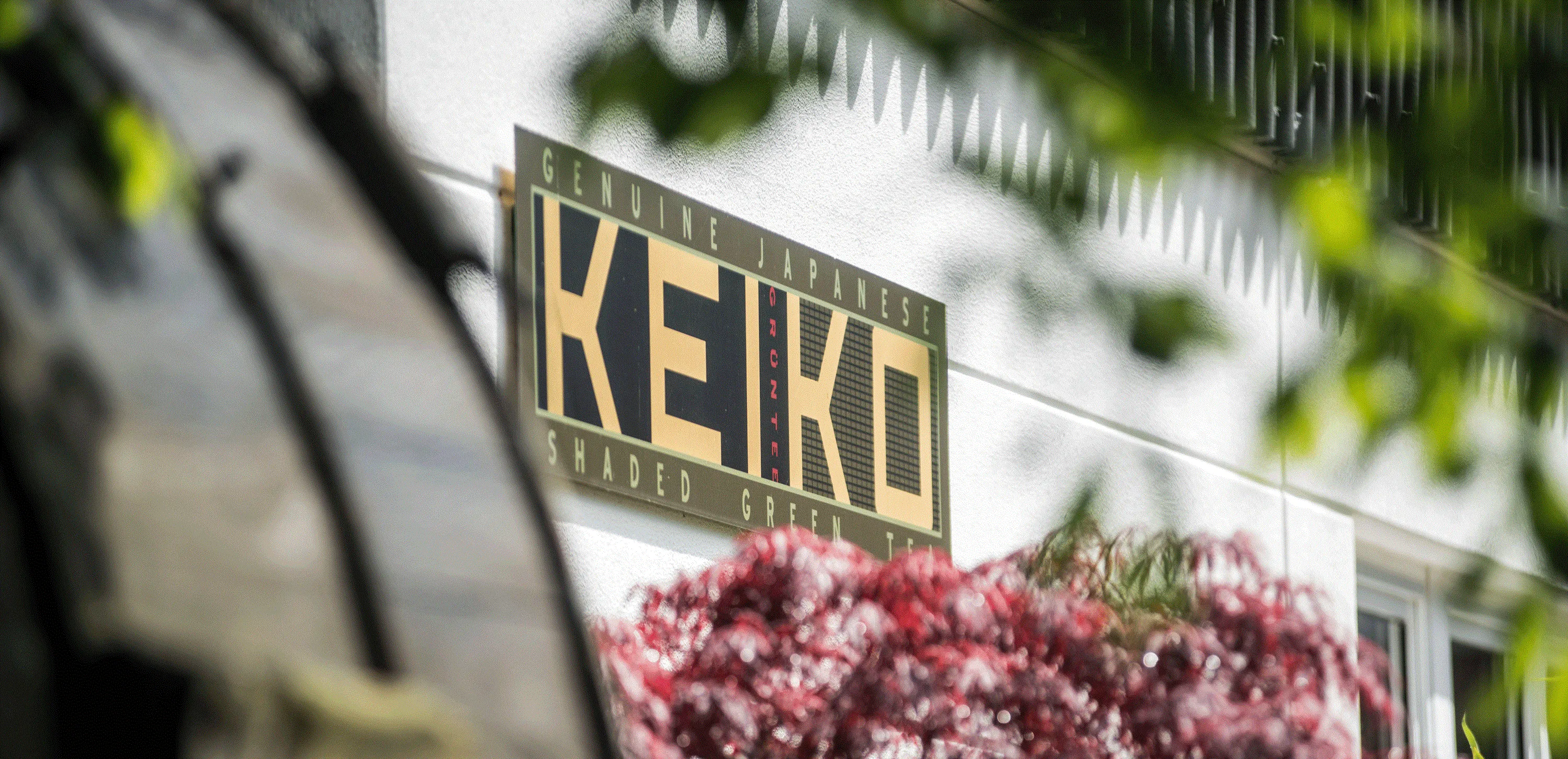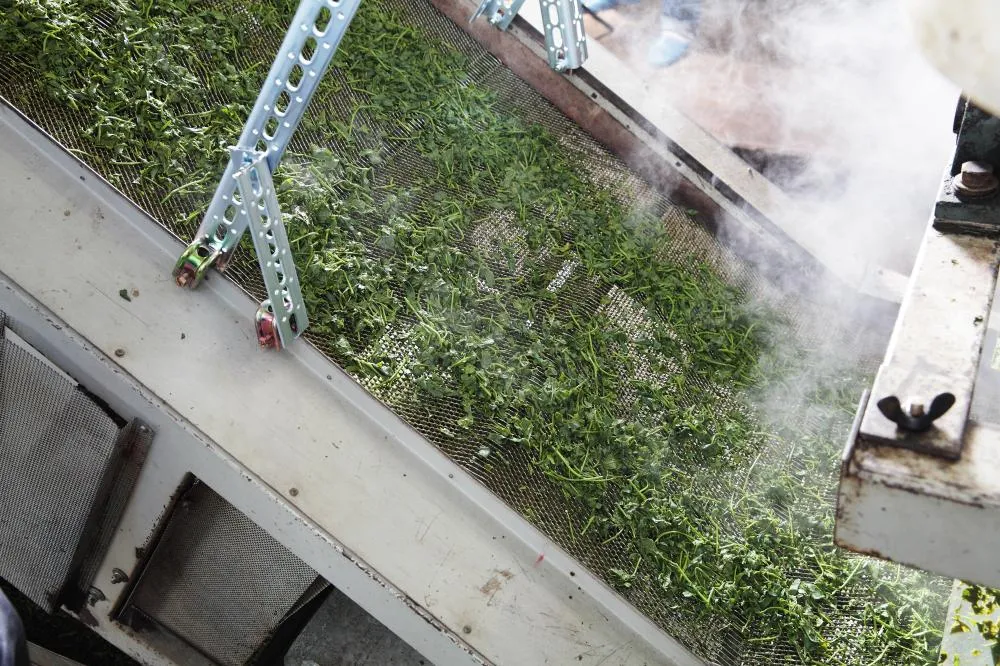
Chūmushi
中蒸し
ちゅうむし
In the production of green tea, fermentation is stopped by heating the freshly harvested tea leaves.
A comparison with Chinese green teas, which are traditionally roasted in large pans, clearly shows the impact of the process used for this on the taste and ingredients of the tea, whereas in Japan a steaming process is generally used. These steamed Japanese teas are often simply referred to as Sencha.
But even with steamed teas, there are differences depending on the strength and duration of steaming.
From the very beginning, our partners at Shimodozono Japan have attached great importance to teasing out the best possible aroma from each tea on the one hand, and on the other hand to getting as many of the valuable ingredients of the fresh tea leaf into the cup as possible and making them available to the body.
To achieve this, the steaming processes have been continuously developed and improved over the years.
The freshly harvested tea is steamed directly at the field at 100°C. Chūmushi (also known as chumushi) is the medium-strong steaming (between asamushi and fukamushi) with a duration of 45-60 seconds.
Chumushi teas are marked with this symbol on KEIKO tea boxes:
You can find more information about steaming in our green tea blog: What does steaming do to tea?

